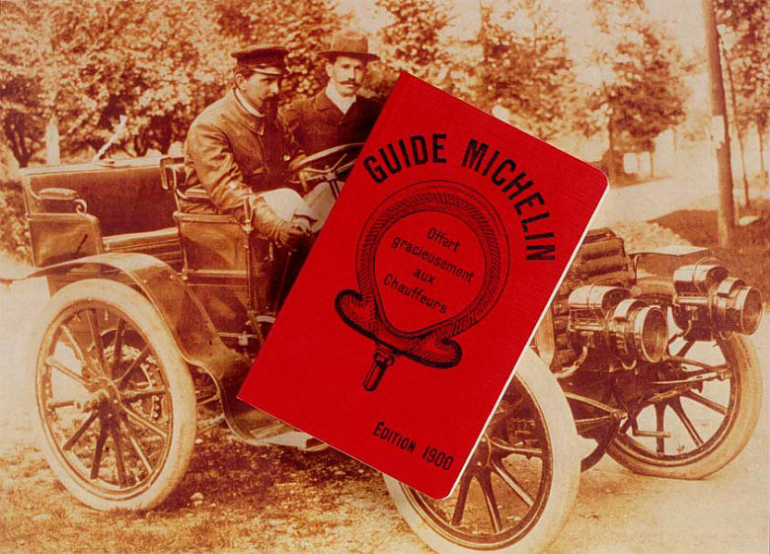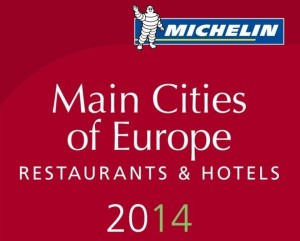Like many entrepreneurs, André and Édouard Michelin had a problem – they had an amazing product that most people didn’t know about.
For five years, they had been producing pneumatic tires for a luxury item called an automobile. They were seeing success, but with only 3,000 cars in all of France, they needed a bigger market.
How do you grow a market? Run newspaper ads for tires?
No, they started publishing guidebooks.
The Michelin Guide
André thought that tourism was the key to increased car (and tire) sales. Tourism wasn’t big in France at the time because people did not know where to go or what they would find. If Michelin could provide trusted information, more people would become tourists. More tourists mean more cars.
The Michelin Guide first appeared in 1900. It was a listing of towns of interest within France, along with recommendations for hotels and restaurants. It also included helpful information for making small car repairs like changing a tire.
Turns out Michelin’s hunch was right. While the Michelin Guide can’t take all the success for the steep uptake in car production in France (over 30,000 in 1903), I’m sure it didn’t hurt.
A Growing Asset
But that’s not the end of the story. By 1910, Michelin was producing guides for 14 other European and North African countries. By the 1930s, the Michelin Guide had become the top authority in all of Europe for restaurant reviews, and had introduced its now famous three-star rating system. During World War II, the Allied troops specially requested that the Michelin Guide remain in publication because its maps were superior to any other source.
The Michelin Guide soon became a completely separate (and profitable) asset for Michelin apart from its tire business. While the guides were initially given away for free, they started charging for them in the 1920s, and sales rose as it was seen as an elite guide.
Today, the Michelin Guide is a worldwide powerhouse when it comes to travel and food recommendations. A single change in a star rating has the power to flood a restaurant with new business or drop it from recognition.
Who knew that a tire company would be the most trusted source for fine dining around the world?
Content Marketing Analysis
This example of Content Marketing is amazing. Michelin’s ultimate goal was to grow the market of car buyers, but the created an intermediate goal of increasing tourism. That is a connection that most business owners never think to make.
Michelin picked an Ideal Audience of people who have the ability to buy a car, but not the motivation. They targeted them in the Uninterested or Window Shopper ARC. The need they had was the confidence to travel outside the home. They chose to deliver value by exciting them about new opportunities in tourism. The final media product was a yearly printed guidebook with recommendations.
Michelin still uses the Guides today strategically to enter into new markets and gain notoriety. They are one of the most enduring, profitable, and brilliant forms of marketing in the world
How could you apply this to your own business?
Are you in a position where you need to grow your market? What is a related industry that you could easily promote that would have a positive effect on your industry? What could you provide a guide or recommendation for that would be really useful for your audience?
The opportunities are endless. Share a thought below in the comments how you can or have use this idea for your business.

